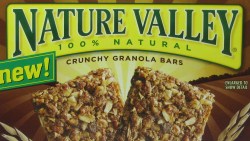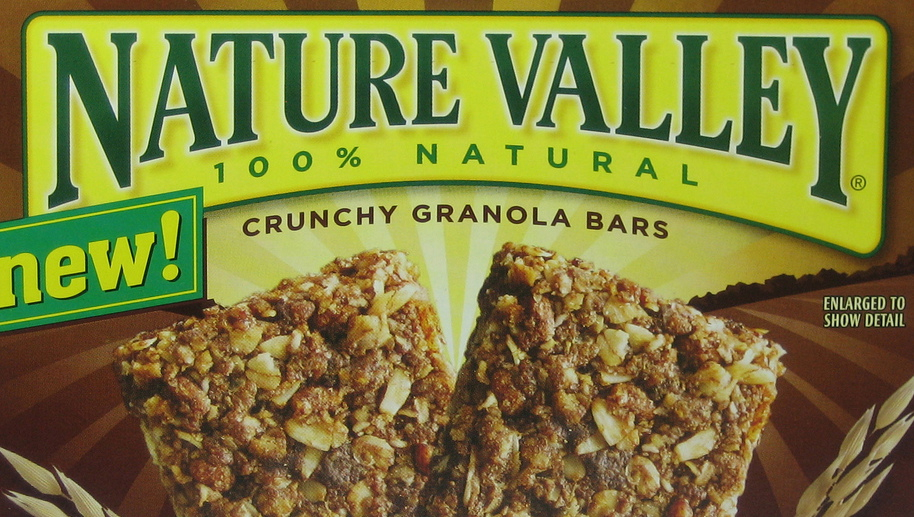 What do Juicy Juice fruit punch, Tyson chicken, and Nature Valley granola bars have in common? They’re all branded with the same mysterious, ubiquitous term: natural.
What do Juicy Juice fruit punch, Tyson chicken, and Nature Valley granola bars have in common? They’re all branded with the same mysterious, ubiquitous term: natural.
The natural label’s takeover is not just anecdotal. In 2008, Mintel’s Global New Products Database found that “all-natural” was the second most used claim on new American food products. And a recent study by the Shelton Group [PDF], an advertising company focusing on sustainability, found that it’s also the most popular. When asked, “Which is the best description to read on a food label?” 25 percent of consumers answered, “100 percent natural.”
So what does natural mean? Well, that depends on who you’re asking. A salesperson in the meat department at Shoprite in Chester, N.Y., told me that Tyson’s all natural chicken is “basically the same thing” as organic. At General Mills, 100 percent natural means “that all ingredients used are from a natural source and a natural process,” though when I asked for clarification on what counts as a “natural process,” the customer service agent was out of answers.
According to Rachel Saks, co-founder of the Brooklyn-based nutrition consulting company tABLE health, for her health-conscious clients, natural “means whatever they want it to mean.” Clients with high blood pressure, for example, “tend to interpret natural as good for their blood pressure, maybe not too high in salt.” Clients looking to lose weight, meanwhile, read the claim to mean the food is low-calorie. “It solves whatever problem they want to solve.”
With all of these disparate interpretations of a once-straightforward word, it may come as a surprise that there is, at least on principle, some official government guidance to how the word should be used.
What confuses most people, however, is that the two agencies that regulate food in this country — the U.S. Department of Agriculture (USDA) and the Food and Drug Administration (FDA) — have very different approaches to the term.
A meaty approach
The USDA, which is tasked with regulating meat and poultry, says that a product is “natural” if it contains “no artificial ingredient or added color and is only minimally processed. Minimal processing means that the product was processed in a manner that does not fundamentally alter the product.”
As little as this definition really tells us, Stephen Gardner, director of litigation for the Center of Science in the Public Interest (CSPI), says it beats the FDA’s definition hands down. “Meat is an easy one. Natural, at a minimum, should be what you get off the cow, or the pig, or the chicken. It shouldn’t be treated.” And for the most part, that is what natural means when used on meat products. It says nothing about what happened to the animal before slaughter, what it was fed or treated with while alive (read: GMO corn or grass, antibiotics or not), or under what kinds of conditions it was raised. But it does mean that between the slaughterhouse and the supermarket, nothing was added or done to it. (Gardner notes that there are some outliers that seem to have escaped the USDA’s eye, like chicken that is pumped with salt water to give it a healthier appearance and better taste.)
Everything else
The real problem, according to Gardner, is the lack of regulation on non-meat products, which, despite being called “natural,” are often highly processed. Gardner and CSPI are taking this issue to the courts in a lawsuit against General Mills for marketing its Nature Valley granola bars, which contain additives like maltodextrin, as “100% Natural.” The suit challenges the practice as misleading advertising, not as running afoul of FDA rules — probably because the rules themselves allow the practice to continue.
The FDA says on its website, “from a food science perspective, it is difficult to define a food product that is ‘natural’ … [The] FDA has not developed a definition for use of the term natural or its derivatives. However, the agency has not objected to the use of the term if the food does not contain added color, artificial flavors, or synthetic substances.”
How’s that for hard-lined? Seriously, though, “natural” can mean anything a food producer wants it to, no matter how misleading, and the FDA won’t “object.” Even though the agency is aware of how misunderstood the term is, it has been willfully avoiding opportunities to define it since the late 1970s.
“What should happen is that the FDA should just adopt, as first the Sugar Association and then CSPI [PDF] asked it to do about five years ago, the USDA definition of natural, which is minimally processed,” says Gardner. The term “minimally processed” refers to “stuff you could do in your own kitchen.” General Mills, on the other hand, claims that “natural” means the ingredients are derived from a “natural process” — a vague phrase if there is one.
Saks encounters this “natural” misunderstanding with as much as 15 percent of her clientele, who are often, but not always, well-educated and concerned with the quality of their food. While she’d like to see stricter standards for the term, she admits, “that’s tough too, because you’d have to be defining it by something that it’s not,” as in not made with corn derivatives, genetically modified organisms, or other synthesized ingredients.
Even among the food lawyers there is a debate about what “natural” should mean on a food label and whether the FDA should step in. Yve Golan, founding partner of The Golan Firm and a specialist in food labeling law, has disagreed with Gardner’s contention that the FDA should define the term. Pointing to loopholes in the organic label, she worries that an FDA definition will lead to “a hyper-technical definition riddled with needless exceptions.”
That, of course, brings us back to the original problem Saks pointed to: “Natural” currently means something different to every consumer. And, if that’s really the case, how can it mean anything at all?


